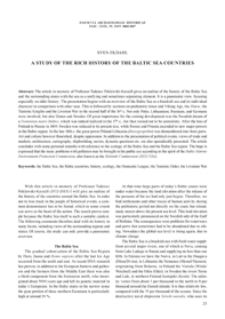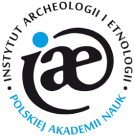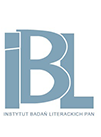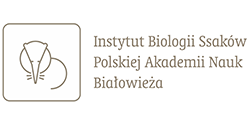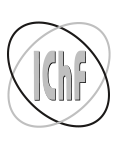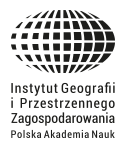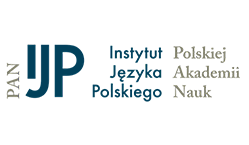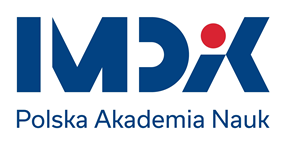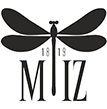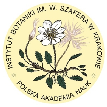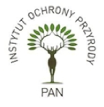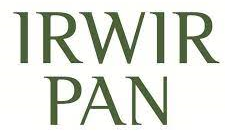- Search in all Repository
- Literature and maps
- Archeology
- Mills database
- Natural sciences
Advanced search
Advanced search
Advanced search
Advanced search
Advanced search

Object
Title: A Study of the Rich History of the Baltic Sea Countries
Subtitle:
Fasciculi Archaeologiae Historicae. Fasc. 29 (2016)
Publisher:
Institute of Archaeology and Ethnology of Polish Academy of Sciences ; Polish Academy of Sciences. Łódź Branch
Place of publishing:
Description:
Type of object:
Abstract:
The article in memory of Professor Tadeusz Poklewski-Koziełł gives an outline of the history of the Baltic Sea and the surrounding states with the sea as a unifying and sometimes separating element. It is a panoramic view, focusing especially on older history. The presentation begins with an overview of the Baltic Sea as a brackish sea and its individual character in comparison with other seas. This is followed by sections on prehistoric times and Viking Age, the Hanse, the Teutonic Knights and the Livorian War in the second half of the 16th c. Not only Poles, Lithuanians, Russians, and Germans were involved, but also Danes and Swedes. Of great importance for the coming development was the Swedish dream of a Dominium maris Baltici, which was indeed realized in the 17th c., but then turned out to be unrealistic. After the loss of Finland to Russia in 1809, Sweden was reduced to its present size, while Russia and Prussia ascended to new major powers in the Baltic region. In the late 18th c. the great power Poland-Lithuania (Rzeczpospolita) was dismembered into three parts. Art and culture however flourished, despite oppression. In addition to the presentation of political events, views of trade and markets, architecture, cartography, shipbuilding, navies, dynastic questions etc. are also sporadically presented. The article concludes with some personal remarks with reference to the ecology of the Baltic Sea and the Baltic Sea region. The hope is expressed that the many problems with pollution may be brought in the public eye according to the spirit of the Baltic Marine Environment Protection Commission, also known as the Helsinki Commission (HELCOM)
References:
Ekdahl S. 2014. Sweden’s captured crown: The dynastic conflict of Charles IX and Gustavus Adolphus with Sigismund Vasa. In: E. Saviščevas, M. Uzorka (eds.), Lithuania-Poland-Sweden: European dynastic unions and historical-cultural ties. Vilnius, 131-137
Selle A. 2016. Giftbomben im Wasser. „Der Tagesspiegel”. Accessed on line 26.09.2016
Relation:
Fasciculi Archaeologiae Historicae
Volume:
Start page:
End page:
Detailed Resource Type:
Format:
Resource Identifier:
oai:rcin.org.pl:61237 ; 10.23858/FAH29.2016.003
Source:
IAiE PAN, call no. P III 348 ; IAiE PAN, call no. P III 349 ; IAiE PAN, call no. P III 368 ; click here to follow the link
Language:
Language of abstract:
Rights:
Terms of use:
Copyright-protected material. May be used within the limits of statutory user freedoms
Digitizing institution:
Institute of Archaeology and Ethnology of the Polish Academy of Sciences
Original in:
Library of the Institute of Archaeology and Ethnology of the Polish Academy of Sciences
Projects co-financed by:
Ministry of Science and Higher Education ; Activities popularizing science (DUN)
Access:
Object collections:
- Digital Repository of Scientific Institutes > Partners' collections > Institute of Archeology and Ethnology PAS > Institute Publications
- Digital Repository of Scientific Institutes > Partners' collections > Institute of Archeology and Ethnology PAS > Institute Publications > Current Journals
- Digital Repository of Scientific Institutes > Literature > Journals/Articles
- Digital Repository of Scientific Institutes > Partners' collections > Institute of Archeology and Ethnology PAS > Institute Publications > Current Journals > Fasciculi Archaeologiae Historicae
Last modified:
Apr 9, 2021
In our library since:
Dec 19, 2016
Number of object content downloads / hits:
700
All available object's versions:
https://rcin.org.pl./publication/80432
Show description in RDF format:
Show description in RDFa format:
Show description in OAI-PMH format:
| Edition name | Date |
|---|---|
| Ekdahl, Sven, 2016, A Study of the Rich History of the Baltic Sea Countries | Apr 9, 2021 |
Objects Similar
Ekdahl, Sven (1935– )
Linné, Carl von (1707–1778) Biwald, Leopold Gottlieb (1731–1805) Hasselquist, Fredrik (1722–1752) Aspelin, Elias (1721–1795) Fougt, Henricus (17..-18.. Kiernander, Jonas (1721–1778) Biberg, Isaac Isaacson (1726–1804) Kähler, Mr̄ten (1728–1773) Widmanstettersche Erben
Marosz, Katarzyna J. Jakusik, Ewa
Lipińska, Aleksandra
Kętrzyński, Wojciech (1838–1918)

 INSTYTUT ARCHEOLOGII I ETNOLOGII POLSKIEJ AKADEMII NAUK
INSTYTUT ARCHEOLOGII I ETNOLOGII POLSKIEJ AKADEMII NAUK
 INSTYTUT BADAŃ LITERACKICH POLSKIEJ AKADEMII NAUK
INSTYTUT BADAŃ LITERACKICH POLSKIEJ AKADEMII NAUK
 INSTYTUT BADAWCZY LEŚNICTWA
INSTYTUT BADAWCZY LEŚNICTWA
 INSTYTUT BIOLOGII DOŚWIADCZALNEJ IM. MARCELEGO NENCKIEGO POLSKIEJ AKADEMII NAUK
INSTYTUT BIOLOGII DOŚWIADCZALNEJ IM. MARCELEGO NENCKIEGO POLSKIEJ AKADEMII NAUK
 INSTYTUT BIOLOGII SSAKÓW POLSKIEJ AKADEMII NAUK
INSTYTUT BIOLOGII SSAKÓW POLSKIEJ AKADEMII NAUK
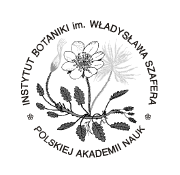 INSTYTUT CHEMII FIZYCZNEJ PAN
INSTYTUT CHEMII FIZYCZNEJ PAN
 INSTYTUT CHEMII ORGANICZNEJ PAN
INSTYTUT CHEMII ORGANICZNEJ PAN
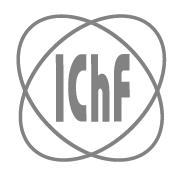 INSTYTUT FILOZOFII I SOCJOLOGII PAN
INSTYTUT FILOZOFII I SOCJOLOGII PAN
 INSTYTUT GEOGRAFII I PRZESTRZENNEGO ZAGOSPODAROWANIA PAN
INSTYTUT GEOGRAFII I PRZESTRZENNEGO ZAGOSPODAROWANIA PAN
 INSTYTUT HISTORII im. TADEUSZA MANTEUFFLA POLSKIEJ AKADEMII NAUK
INSTYTUT HISTORII im. TADEUSZA MANTEUFFLA POLSKIEJ AKADEMII NAUK
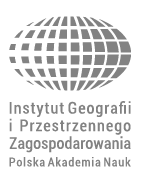 INSTYTUT JĘZYKA POLSKIEGO POLSKIEJ AKADEMII NAUK
INSTYTUT JĘZYKA POLSKIEGO POLSKIEJ AKADEMII NAUK
 INSTYTUT MATEMATYCZNY PAN
INSTYTUT MATEMATYCZNY PAN
 INSTYTUT MEDYCYNY DOŚWIADCZALNEJ I KLINICZNEJ IM.MIROSŁAWA MOSSAKOWSKIEGO POLSKIEJ AKADEMII NAUK
INSTYTUT MEDYCYNY DOŚWIADCZALNEJ I KLINICZNEJ IM.MIROSŁAWA MOSSAKOWSKIEGO POLSKIEJ AKADEMII NAUK
 INSTYTUT PODSTAWOWYCH PROBLEMÓW TECHNIKI PAN
INSTYTUT PODSTAWOWYCH PROBLEMÓW TECHNIKI PAN
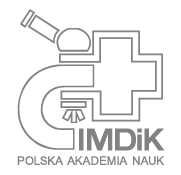 INSTYTUT SLAWISTYKI PAN
INSTYTUT SLAWISTYKI PAN
 SIEĆ BADAWCZA ŁUKASIEWICZ - INSTYTUT TECHNOLOGII MATERIAŁÓW ELEKTRONICZNYCH
SIEĆ BADAWCZA ŁUKASIEWICZ - INSTYTUT TECHNOLOGII MATERIAŁÓW ELEKTRONICZNYCH
 MUZEUM I INSTYTUT ZOOLOGII POLSKIEJ AKADEMII NAUK
MUZEUM I INSTYTUT ZOOLOGII POLSKIEJ AKADEMII NAUK
 INSTYTUT BADAŃ SYSTEMOWYCH PAN
INSTYTUT BADAŃ SYSTEMOWYCH PAN
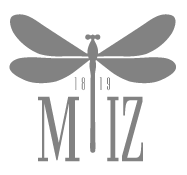 INSTYTUT BOTANIKI IM. WŁADYSŁAWA SZAFERA POLSKIEJ AKADEMII NAUK
INSTYTUT BOTANIKI IM. WŁADYSŁAWA SZAFERA POLSKIEJ AKADEMII NAUK
